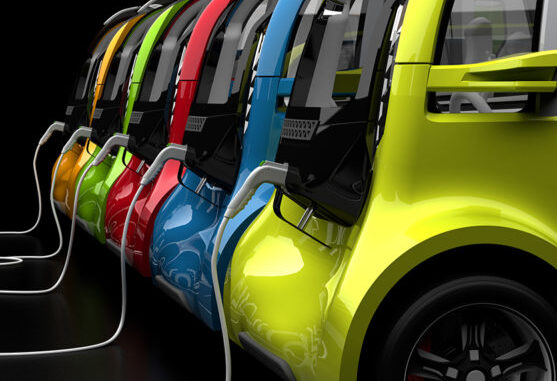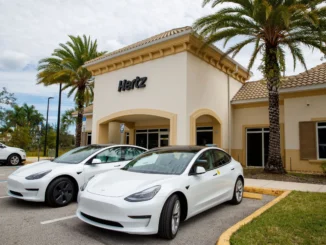
Oil refiners and ethanol producers expressed support Aug. 26 for achieving carbon neutrality in the transportation sector but argued that California’s push to eliminate gasoline- and diesel-fueled vehicle sales by 2035 was misguided.
“This is a deeply flawed plan that will eliminate consumer choice, limit innovation and jeopardize progress towards our shared climate goals,” the American Petroleum Institute said in a statement.
The group lashed out against “prescriptive mandates” and said that “meaningful progress is best achieved through policies that promote marketplace flexibility, are technology-neutral and respectful of consumer choice.”
The California Air Resources Board Aug. 25 adopted new regulations setting sales mandates for zero-emission vehicles (ZEVs). Starting with model year 2026, 35% of new passenger vehicles sold in California would have to be ZEVs, ratcheting up to 51% of new car sales in 2028, 68% in 2030 and 100% in 2035. Under the sales quotas, 20% of ZEVs sold could be plug-in hybrids.
CARB members touted the historic measure, one of the first bans on internal combustion engine (ICE) vehicles seen around the world, as crucial to tackling climate change as the rules would reduce greenhouse gas emissions from passenger vehicles by more than 50% by 2040 and lower smog-forming emissions from passenger vehicles by more than 25% by 2037.
Transportation is the largest source of GHG emissions in California, with some 70% of the sector’s emissions coming from passenger vehicles.
Platts Analytics’ Matthew Williams said that the on-road ICE fleet could be reduced by roughly 13 million vehicles by 2035 versus 2020. That would imply almost 5 million fewer vehicles by 2035 if the 100% ZEV sales target is reached, compared with Platts Analytics’ current reference case.
“Under this ICE ban scenario, the EV fleet would not reach over 50% until 2035,” Williams said.
Pressure on EPA
The Advanced Clean Cars II regulations must still garner approval from the California Office of Administrative Law and final signoff from the US Environmental Protection Agency.
American Fuel & Petrochemical Manufacturers President and CEO Chet Thompson urged the Biden administration and the EPA to step in to put a halt to what he called a “radical ban” with devastating implications for consumers, energy security and the US manufacturing economy.
Thompson criticized the new car rules as “one of the most expensive and inefficient ways to address emissions and climate change.”
“Liquid fuels, and competition among various technologies, offer a faster and much more affordable pathway to cleaner transportation than any California-style ban,” he said. “It is critical that President Biden and the EPA reject California’s request for a Clean Air Act waiver to proceed with this unlawful ban.”
He argued that allowing the regulation to stand would grant California regulators sweeping federal authority, “effectively appointing Governor [Gavin] Newsom and CARB as car and truck czars for the entire US.”
California’s rules are more aggressive than President Joe Biden’s goal of having EVs account for 50% of new vehicle sales by 2030.
Renewable Fuels Association President and CEO Geoff Cooper said his organization was “disappointed and mystified” by California’s actions.
“While we support the state’s goal of achieving carbon neutrality by 2050, we strongly disagree with the notion that electric vehicles are the only way to get there,” Cooper said. “Policies that dictate technology winners and losers often backfire and rarely deliver the desired results.”
Grid strain
He added that the phase-out of ICE vehicle sales, if EPA grants the waiver, would “severely limit options and raise the cost of vehicle ownership for California consumers, while putting more strain on an already-overburdened electrical grid.”
Platts Analytics expects California’s total vehicle fleet in 2035 to include nearly 14.3 million EVs, for which approximately 44 TWh of incremental generation would be required to charge those vehicles. Total power generation in California in 2021 was 278 TWh.
California Independent System Operator spokesperson Anne Gonzales said the grid operator recognized EVs “as a promising opportunity to reduce oversupply in the middle of the day,” but that it was “too early to tell the full role or impact of EVs on the power grid.”
RFA’s Cooper pointed to technology-neutral, market-based approaches like California’s Low Carbon Fuel Standard (LCFS) as a more efficient and economical means of spurring carbon reductions.
He noted that ethanol under the LCFS has generated nearly 27 million metric tons of GHG savings.
CARB is relying heavily on the LCFS to meet the state’s emissions reduction goals. Under that program, electricity has already surged to the second leading credit generator, overtaking ethanol, though both still pale in comparison to renewable diesel, according to Platts Analytics’ Jamie Dorner.



